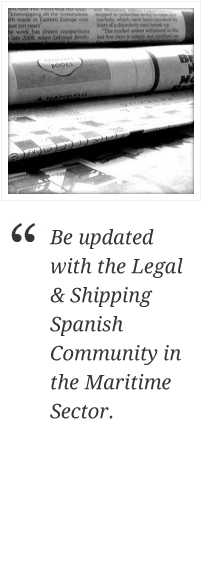CIRCULAR 2A / 2016 VGM IMPLEMENTATION IN SPAIN
JULY 2016
IMPLEMENTATION IN SPAIN OF CONTAINER GROSS MASS VERIFICATION
BACKGROUNDS
The International Maritime Organization (IMO), by Resolution MSC.380 (94) dated 21st November 2014, has amended Rule 2 about cargo information, Chapter VI, regarding cargo transportation and liquid fuels, of the Safety of Life at Sea Convention (SOLAS) 1974. These amendments to SOLAS came into force on 1st July last and were implemented in Spain by Resolution of 31st May 2016 issued by the General Directorate of Merchant Marine (DGMM).
From this date, it is a duty to every shipper (person or company mentioned in the Bill of Lading as the shipper or the person who has signed a transportation contract with a shipping company in his name or on behalf of another person) to verify the gross mass  (VGM) of full containers, making sure that the VGM is indicated in all necessary shipping papers and to be certain that these papers are provided to the Captain of the vessel, his representative or terminal representatives with sufficient prior notice in which to elaborate a stowage plan.
CONSEQUENCE
If a container is delivered in a maritime premise or terminal without the shipper having provided the VGM, the Captain or his representative or the representative of the terminal will be able to obtain the VGM of a full container on behalf of the shippers. For this purpose, the full container can be weighed in the terminal or somewhere else.
According to DGMM, when the activity of verifying the gross mass of a container takes place within the service zone of a General Interest Port, such activity will have the nature of commercial service according to the Port State and Merchant Marine Full Text Law, approved by Royal Law Decree.
SCOPE OF APPLICATION
The VGM will be applied to all containers ruled by the International Convention for Safe Container 1972 and that are to be stowed on board a vessel that follows Chapter VI about cargo transportation and liquid fuels, of the Safety of Life at Sea Convention, SOLAS.
The Resolution of MSC has highlighted that the containers transported on a chassis or a tow are exempt from this obligation when they are driven to or from a vessel in transit making short international trips, according to SOLAS definitions contained in Rule 3 of Chapter III.
GROSS MASS VERIFICATION METHODS
Method 1: to weigh the full container once the cargo is stowed and the container is sealed, or;
Method 2: to weigh all the packages and cargo elements, including the pallets weight, dunnage wood and any other material used to secure the cargo included in the container and adding this weight to the container tare weight.
According to DGMM, the weighing scales, weighbridge, the lifting equipment and other devices used to verify the gross mass of containers must be measured or calibrated by a laboratory recognized by the National Entity of Recognition (ENAC) if the verification takes place in Spain; or in other cases, by an entity recognized by ENAC through the Mutual Recognition Agreements among national recognizing organisms.
DISCREPANCIES BETWEEN VERIFIED AND DECLARED GROSS MASS
According to IMO`s directives, when there are discrepancies between the declared and the VGM of a container, the VGM will prevail.
The discrepancy should be solved using the VGM obtained by the Port terminal facility. DGMM has highlighted that there is a discrepancy when:
- The difference of gross mass obtained in two different weighing processes is 500 kilograms, plus or minus, to containers loaded with up to 15 metric tons.
- The difference of gross mass obtained in two different weighing processes that implies a different percentage from 5%, plus or minus, to containers that contain more than 15 metric tons.
COMMUNICATION PROCEDURE OF GROSS MASS IN PORT OF BARCELONA
Barcelona was the first Port to develop a guide to apply the new rules, making explicit the electronic procedure to communicate the verified weight of containers, taking into consideration many different scenarios. This guide is available in Barcelona`s Port web in the following link:
We remain at your entire service should you have any doubt related to this Circular and to the appliance of container weighing matters in Spain.

